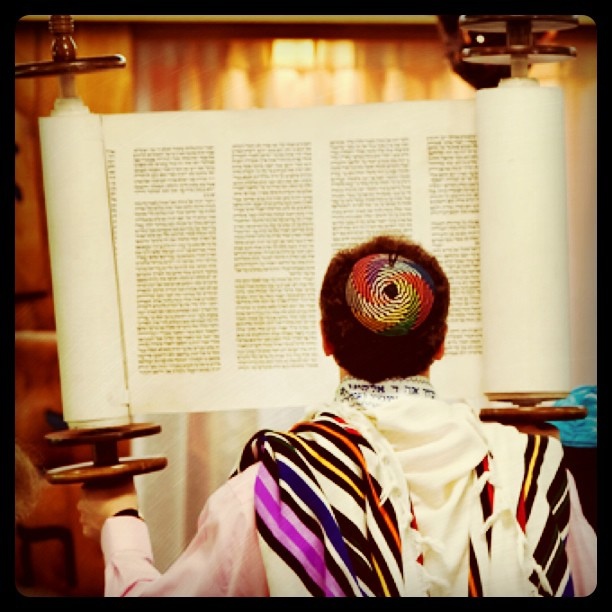 A number of years ago, we were discussing the need to review and edit the beloved TE ‘blue’ prayerbook, and the ritual committee made a decision to adopt an existing prayerbook that would fit the needs of our community, in addition to the TE’s own siddur. I was able to temporarily secure (from Camp Eisner) enough copies of Mishkan Tefilah, the new Reform prayerbook, and we had a number of services over the course of a few months, giving everyone a chance to explore the new book and to see it ‘in action’. While no one prayerbook can ever be perfect, at the end of this process the ritual committee agreed that Mishkan Tefilah was a wonderful siddur for Temple Emanuel to have and to use. We have used the two prayerbooks ever since – usually alternating between them every other week, and we continue to experiment with our liturgy all the time.
A number of years ago, we were discussing the need to review and edit the beloved TE ‘blue’ prayerbook, and the ritual committee made a decision to adopt an existing prayerbook that would fit the needs of our community, in addition to the TE’s own siddur. I was able to temporarily secure (from Camp Eisner) enough copies of Mishkan Tefilah, the new Reform prayerbook, and we had a number of services over the course of a few months, giving everyone a chance to explore the new book and to see it ‘in action’. While no one prayerbook can ever be perfect, at the end of this process the ritual committee agreed that Mishkan Tefilah was a wonderful siddur for Temple Emanuel to have and to use. We have used the two prayerbooks ever since – usually alternating between them every other week, and we continue to experiment with our liturgy all the time.
Every time the High Holy Days are approaching and we begin to prepare by going through the liturgy, I am reminded just how challenging the current HH machzor Gates of Repentance is for many of our members. Gates of Repentance has served the Reform Movement well for many years. When it was first published in 1978, it represented exciting and progressive liturgical innovation. However, today it is beginning to feel dated. The fact that it does not include transliteration is a stumbling block for many in our community, something that has been acknowledged in both our TE ‘blue’ siddur and the Mishkan Tefilah. So too, many of today’s Jews feel disconnected from prayer and from theological and ideological concepts that do not seem consistent with a contemporary sensibility. Gates of Repentance was a wonderful innovation in its time. Incorporating more Hebrew and traditional liturgy allowed for a feeling of renewed tradition in the High Holy Days. Adding gender-neutral language addressed many of the contemporary needs of the Reform world. Today, our needs go beyond gender neutral language – the basic meaning of the holidays needs to be addressed and updated.
Over the last few years URJ congregations all across United States have engaged in piloting the new High Holy Day Machzor, Mishkan HaNefesh. Although TE has not been involved in the piloting process, we have obtained and used at TE the early draft of the Rosh Hashanah service on the 2nd Day of Rosh Hashanah for the last two years. Last fall hundreds of congregations throughout the US have adopted Mishkan HaNefesh, and the reviews have been incredibly positive across the board.
After much discussion at the Ritual Committee, we have decided to engage in a year of learning and exploration of the new Machzor. Starting on September 8th we will have a number of weekly sessions that will explore the changes and innovations in Mishkan HaNefesh and invite learners to find new meaning for their High Holy Days experiences. We will have an opportunity to engage with the new machzor in comparison to other texts, as well as explore some of the different readings and changes to the service. I couldn’t think of a better way to spend the month of Elul and to begin to prepare for the upcoming High Holy Days, as well as explore the new Machzor in greater detail.
Later in the year we will create additional opportunities to explore the new book, and to experience what it may feel like using it as part of our HH observance at TE. In the meantime, I look forward to seeing many of you on September 8, 22 and 29, and October 6 at 7:30 pm!
